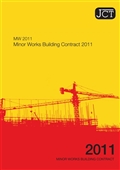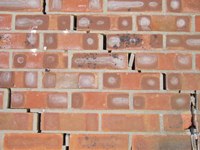 Japanese knotweed is an amazing plant. The young stems are edible and taste like bamboo shoots. It can grow over 20 feet in height. Its root systems can penetrate as deep as 3 metres below ground surface level. In some cases it has been reported to grow as deep as 5 metres. It usually grows in thick clumps (or stands). It can grow in a variety of soil PH’s. It will grow from a small cutting and will rapidly reroot itself. Where roots are disrupted new shoots will begin from breaks in the root, travelling vertically and horizontally through the ground. Its subterranean root system can survive double figure sub-zero temperatures. The mid-19th Century saw its introduction to the United Kingdom as it became popular with landscapers as it could grow quickly, form dense screens and hold together land banks with its root system. It was widely used in Wales to hold together subsiding railway embankments. Japanese knotweed has no predators in the UK and as such is not easily controlled. The saving grace is that the plant in this country is female only and is not espablished by seeds. However, the roots and stems can establish in new soil easily if not carefully disposed of.
Japanese knotweed is an amazing plant. The young stems are edible and taste like bamboo shoots. It can grow over 20 feet in height. Its root systems can penetrate as deep as 3 metres below ground surface level. In some cases it has been reported to grow as deep as 5 metres. It usually grows in thick clumps (or stands). It can grow in a variety of soil PH’s. It will grow from a small cutting and will rapidly reroot itself. Where roots are disrupted new shoots will begin from breaks in the root, travelling vertically and horizontally through the ground. Its subterranean root system can survive double figure sub-zero temperatures. The mid-19th Century saw its introduction to the United Kingdom as it became popular with landscapers as it could grow quickly, form dense screens and hold together land banks with its root system. It was widely used in Wales to hold together subsiding railway embankments. Japanese knotweed has no predators in the UK and as such is not easily controlled. The saving grace is that the plant in this country is female only and is not espablished by seeds. However, the roots and stems can establish in new soil easily if not carefully disposed of.
The plant is a hardy one and it is illegal to spread the plant under the Wildlife and Countryside Act 1981. Soil deemed to be contaminated with Japanese knotweed is sighted as controlled waste under the Environmental Protection Act 1990. In recent years lenders have begun declining loans on properties due to the presence of Japanese knotweed on sites. Most buildings insurance policies do not cover damage and problems caused by Japanese knotweed.
 Japanese knotweed can damage ruin gardens, drains, paths paving, walls and out buildings. In rare and exceptional cases it has been reported to affect foundations and floors.
Japanese knotweed can damage ruin gardens, drains, paths paving, walls and out buildings. In rare and exceptional cases it has been reported to affect foundations and floors.
It can be treated in a number of ways. Herbicides can be applied, but this is usually necessary over a number of years. This is most economic, but not always effective. Excavation of contaminated soil is also employed, but soil must be disposed of as hazardous waste and the depth of the root system can mean excavation and disposal amounts to serious costs. Experiments with introduced grazing insects are being trialled, but there are obvious unknowns with introducing non-native insects into the environment. Japanese knotweed being the case in point.
The presence of Japanese knotweed is likely to affect the value of a property and remediation is expensive. Caught early enough and not disrupted the plant can be eradicated before it spreads.
I took these photo’s at a property in Bath. Unfortunately the knotweed had taken root outside the rear of the property. The building occupant was pleased he was only renting the property. The landlord and neighbours are likely to have a very different view on it.














